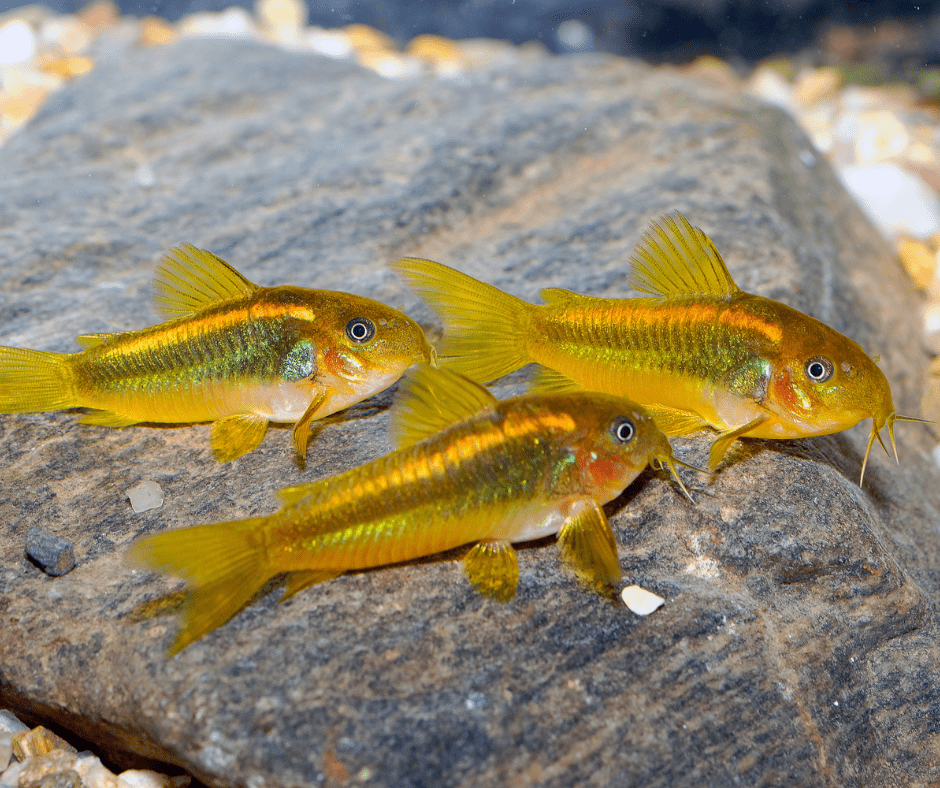Breeding Corydoras in a community tank can be both exciting and challenging. These small, peaceful catfish are known for their playful personalities, and witnessing their breeding behavior is rewarding. However, to get them to breed successfully in a tank shared with other species, you’ll need to make some specific preparations. Here's a guide to help you encourage Corydoras to breed in a community tank:
1. Ensure Optimal Water Conditions
Corydoras thrive and breed in water that mimics their natural habitat, which is typically soft, slightly acidic, and clean. To create the ideal conditions:
- Temperature: Keep the water temperature between 72°F and 78°F (22°C-25°C). Some Corydoras species prefer slightly cooler temperatures, so research your specific species.
- pH Level: Maintain a pH of 6.5-7.0 for most species, although Corydoras are fairly adaptable.
- Water Hardness: Keep the water soft (2-12 dGH) to promote breeding.
- Water Quality: Ensure clean water by performing regular water changes. In fact, one of the most effective triggers for Corydoras breeding is to simulate the rainy season by doing a substantial (20-50%) water change using cooler water. This can replicate the seasonal changes in their natural environment and induce spawning.
2. Provide a Well-Planted and Spacious Environment
A community tank with plenty of hiding spots, live plants, and a variety of textures will make Corydoras feel safe enough to breed. Include:
- Plants: Live plants like Java moss, Anubias, and Amazon swords are excellent because they provide cover for the Corydoras and offer a place for the eggs to be laid.
- Substrate: Sand or fine gravel is ideal for Corydoras, as they like to sift through it. A soft substrate is also safer for their delicate barbels.
- Tank Size: The tank should be spacious enough to accommodate both the Corydoras and other tank mates. At least 20 gallons is recommended for breeding attempts, but bigger is better in a community setting.
3. Choose the Right Tank Mates
Since Corydoras are peaceful and social, tank mates should also be gentle and not overly aggressive or predatory. Ideal companions include:
- Small tetras
- Guppies
- Rasboras
- Dwarf cichlids (non-aggressive types like Apistogramma)
- Peaceful livebearers
Avoid tank mates that may eat the Corydoras' eggs or stress them out during breeding, such as larger, more aggressive species like large cichlids or barbs.
4. Condition Corydoras with High-Quality Food
Feeding your Corydoras a diet rich in protein will help condition them for breeding. They should be fed:
- Live or frozen foods: Bloodworms, brine shrimp, and daphnia are excellent choices to stimulate spawning.
- High-quality pellets and wafers: These can be used as a staple, but supplementing with live or frozen food is essential during breeding preparation.
Offering a variety of food will ensure that the Corydoras are healthy and in prime condition for spawning.
5. Simulate the Breeding Trigger
As mentioned earlier, one of the most effective methods to trigger Corydoras breeding is by mimicking the rainy season. Here’s how to simulate it:
- Perform a large water change (up to 50%) with water that is a few degrees cooler than the tank water. This sudden drop in temperature mimics rainfall and can signal to Corydoras that it’s time to breed.
- This process can be repeated every few days to encourage spawning.
6. Watch for Breeding Behavior
Once the Corydoras are conditioned and the water parameters are ideal, you’ll start to notice specific breeding behavior. Males will begin to chase the females, and they may perform a "T-position," where the male clasps the female in a T-shaped formation. After this, the female will lay eggs, often sticking them to plant leaves, the glass, or other surfaces.
7. Protect the Eggs
In a community tank, the eggs are at risk of being eaten by other fish or even the Corydoras themselves. To ensure successful breeding:
- Move the eggs: If possible, transfer the eggs to a separate breeding tank using a soft brush or your fingers to carefully detach them from surfaces.
- Add protection: If moving the eggs isn’t feasible, consider placing a breeding net around the area where the eggs are laid to protect them from other fish.
8. Caring for the Fry
Once the eggs hatch (after 3-5 days), the fry can be fed a diet of infusoria or specially formulated fry food. As they grow, you can introduce finely crushed flakes or baby brine shrimp.
In a community tank, providing hiding spots and dense plant coverage can help protect the fry from predation.
Breeding Corydoras in a community tank is definitely achievable with the right conditions, tank mates, and care. Focus on creating an environment that mimics their natural habitat, feeding them a high-protein diet, and triggering their breeding instincts with cooler water changes. With patience and attention to detail, you’ll soon see your Corydoras thriving and breeding successfully.
